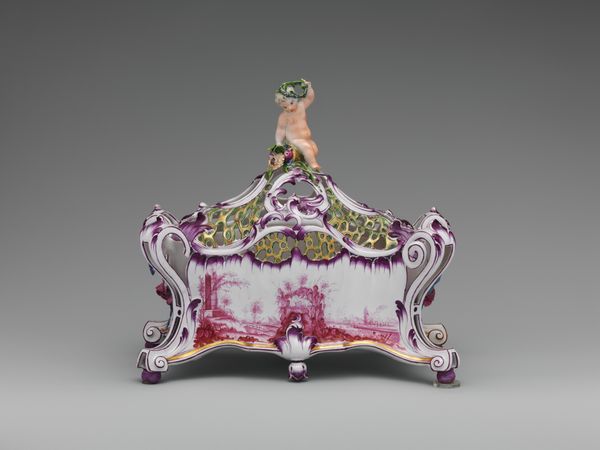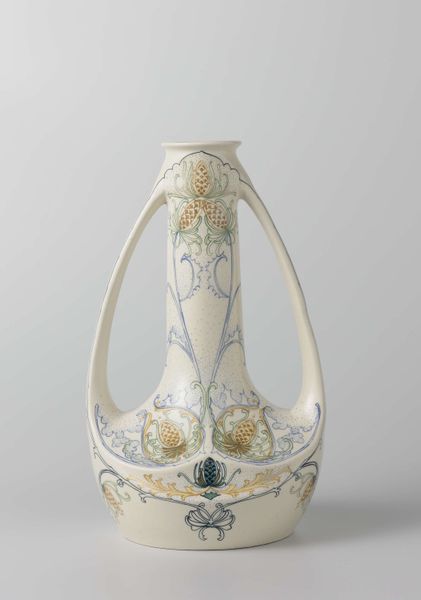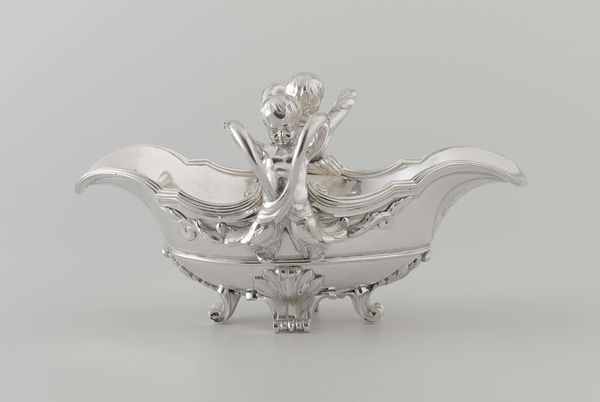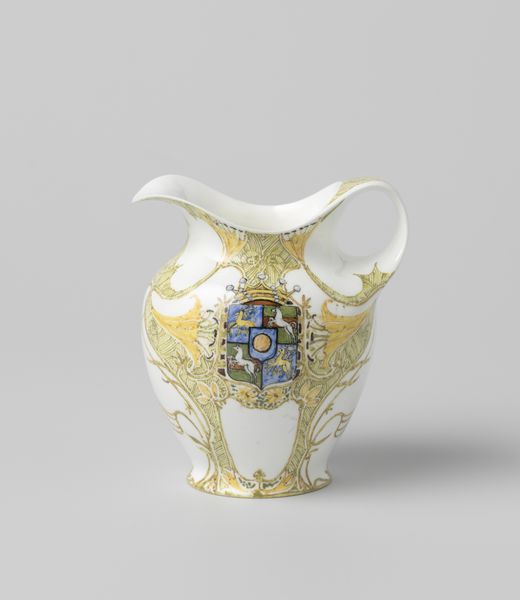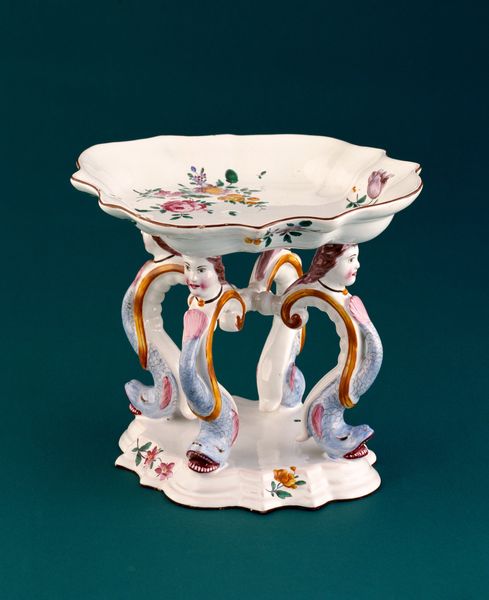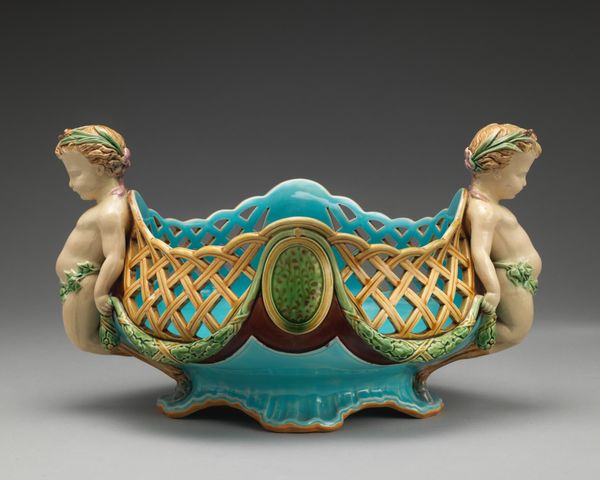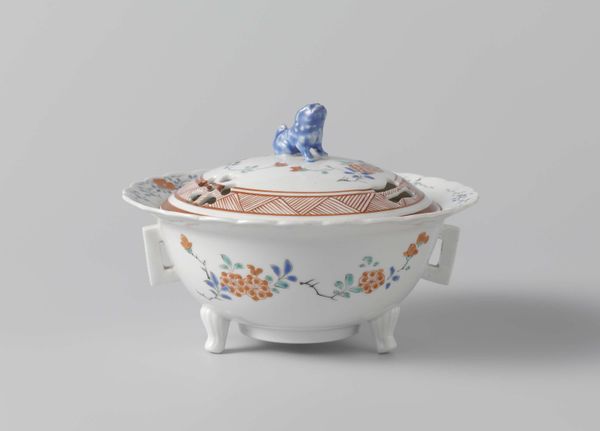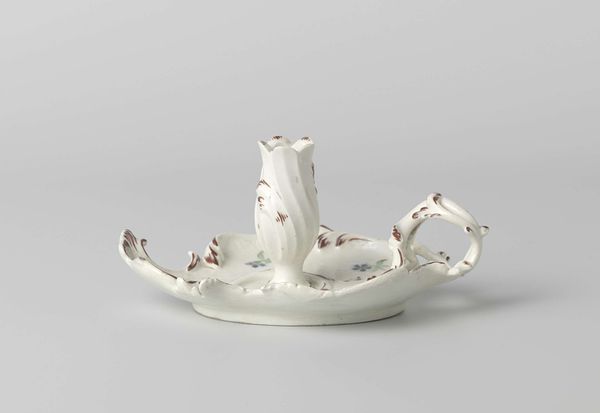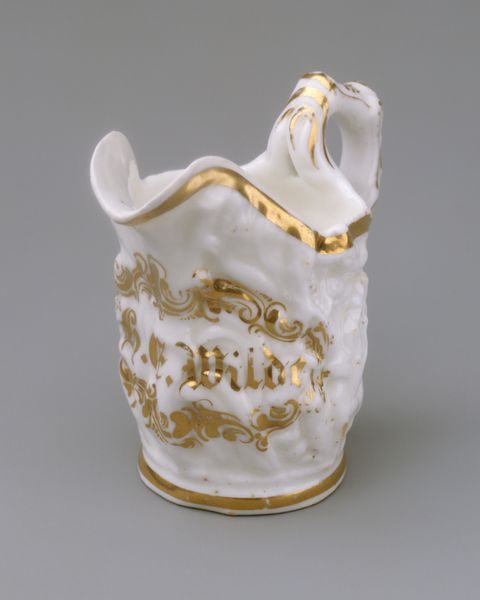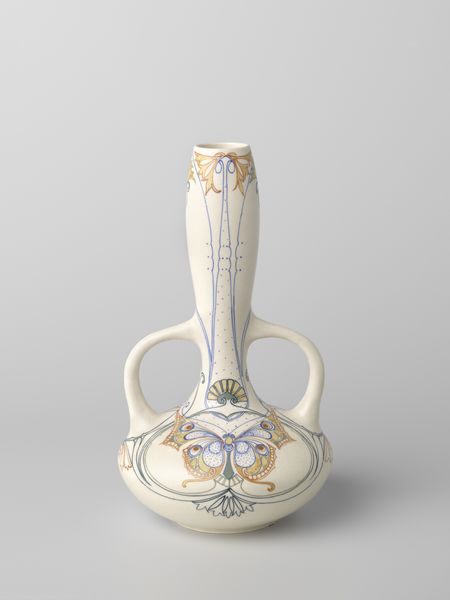
Plaat met vijf openingen, behorend bij een bloemhouder veelkleurig beschilderd met strooibloemen c. 1770 - 1780
0:00
0:00
Dimensions: height 11.7 cm, width 21.0 cm, depth 0.9 cm
Copyright: Rijks Museum: Open Domain
Curator: Oh, that’s a particularly charming piece! What’s your initial response? Editor: It's quite exuberant, isn't it? The swirls and soft colors—it almost looks edible, like a confectionary creation. Curator: Well, that impression is not far off. We’re looking at a tin-glazed earthenware flower holder dating back to around 1770-1780, from the De Drie Posteleyne Astonne workshop. Editor: Earthenware, right. That explains the particular texture and feel of the glaze. I am wondering if you have any additional information on what type of flowers were being used with a flower holder? Curator: In that time flowers went along with socio-economic status and flowers could easily transform to power-tools for self-representation within bourgeois society. Editor: Interesting. Looking more closely at the piece itself, I notice the scattering of blooms feels quite deliberately arranged. It's asymmetrical yet balanced. Curator: Exactly! The Rococo style loved that controlled asymmetry. What interests me is thinking about where a piece like this would have lived in someone's home at the time. Placed on a mantelpiece perhaps, among other curiosities and artworks, a symbol of refined taste and social standing. Editor: I can easily picture that. Its pastel shades must have really stood out in a candle-lit interior, like some fancy jewel! It almost screams aristocracy... or its aspiration, anyway. The delicate molding of the frame definitely reinforces this sentiment. Curator: Well, a piece like this really helps us understand not only the artistry of the period but how everyday objects became sites for expressing social values and cultural ideals. Editor: A splendid demonstration on the subtle, yet expressive ways form and decoration work together! Curator: Indeed. Every little flourish whispers a little something about the values and aesthetics of its time.
Comments
No comments
Be the first to comment and join the conversation on the ultimate creative platform.
